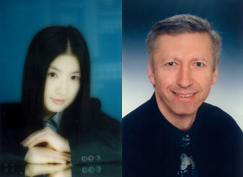Creative Pansori: A New Korean Approach in Music Therapy.
DOI:
https://doi.org/10.15845/voices.v16i1.816Keywords:
Pansori, ethno music therapy, Korean shamanism, expressive therapies, therapeutic storytelling, song-writingAbstract
Creative Pansori is a music therapeutic method especially designed for people receiving treatment for depression. Developed by the Korean music therapist Hyunju Kim, Creative Pansori was internationally presented at the World Congress for Music Therapy 2014 in Krems / Austria. Based on elements of the Korean UNESCO cultural heritage “Pansori”, Hyunju Kim created a clinical method integrating the patient’s self-expressive narration, the therapist’s drumming, and specific verbal and non-verbal interactivities.
Creative Pansori mirrors the spirit of traditional forms of Pansori which date back to the 17th century and are considered to have their roots in Korean shamanism. This fact raises two crucial questions: How can tradition-based practices be applied in modern clinical, namely psychiatric contexts? And can these methods also be used in a cross-cultural way? As epic biographical practices, therapeutic drumming, and highly nuanced arts-related communication between therapist and patient are important phenomena in various cultures, we assume Creative Pansori to be of possibly cross-cultural music therapeutic value. To verify this hypothesis, however, requires further international and interdisciplinary investigations.
Creative Pansori seems to trigger multifaceted psychological and neurobiological processes which facilitate therapeutic coping and cognitive re-organisation. In order to synchronise somatic micro-structures the therapist’s high empathetic reactivity is required.

Downloads
Additional Files
Published
How to Cite
Issue
Section
License
Articles published prior to 2019 are subject to the following license, see: https://voices.no/index.php/voices/copyright

